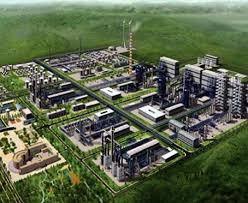Seven years after its grand unveiling by South African President Cyril Ramaphosa, the multi-billion rand Musina-Makhado Special Economic Zone (MMSEZ) in Limpopo province is now under heavy scrutiny. Despite major promises of industrial growth, foreign investment, and thousands of jobs, the site remains largely deserted—with no proper infrastructure, no water supply, no power, and no operational roads.
The MMSEZ, originally billed as a “flagship project” of the Limpopo Provincial Government, was launched in 2018 with promises of attracting R40 billion in investment. However, a recent report by Nndweleni Mphephu, Chairperson of the MMSEZ Board, paints a bleak picture of a stalled mega-project with more money spent on consultants than on visible development.
Mphephu submitted the report to the Limpopo Department of Economic Development, Environment and Tourism. The findings were further supported by answers given in the South African Parliament in May by Minister of Trade, Industry and Competition, Parks Tau, following questions from DA MP Toby Chance.
According to Tau, R2.27 billion is still required to establish bulk infrastructure, but only R1.07 billion has been allocated between 2020 and 2027 in the provincial budget. Meanwhile, R67.5 million has already been spent on consultants alone, with another R50 million paid to contractors and service providers—yet the two sites designated for the zone remain unfinished.
The MMSEZ is split into two areas: Artonvilla, near Musina, which is targeted for light manufacturing; and Mopani, near Makhado, reserved for heavy industry like smelting. The initiative was expected to kick-start industrialisation in Limpopo, bringing long-term economic benefits. Instead, it has become an example of mismanagement and unmet expectations.
According to the report, a total of R85.2 million was approved for consultancy services. Already, R67.5 million has been disbursed to 17 consultants—including engineers, urban planners, project managers, and even horticulturists. These consultants were hired to plan infrastructure such as roads, water systems, and electricity grids. Yet, none of these amenities have materialised on the ground.
Meanwhile, three contractors have been awarded major construction contracts. Two of them, Tshiamiso Trading 1 and 2, received a combined R299.3 million for roads, stormwater systems, and sewer projects. A third company, Rembu Construction, was awarded R134 million for sewer and wastewater works. However, after minimal earthworks and bush clearing, all work was halted.
Tshiamiso terminated its contract due to land ownership disputes. The company was working on land that had not yet been transferred to the MMSEZ from another state entity. They are now pursuing legal action, claiming non-payment for downtime. Worse still, Tshiamiso is accused of illegally removing white rock from a different site and using it at the MMSEZ without permission or compensation.
While the southern site of the MMSEZ was officially gazetted as a Special Economic Zone in 2017, it has now emerged that the northern site at Artonvilla is still not gazetted, casting doubt over its legal and operational status. Tau stated that the Limpopo government plans to submit a gazette request for the northern site by the end of June 2025.
Investment pledges have also fallen short. Of the R40 billion initially promised, the Department of Trade has verified only R2.1 billion from eight potential investors. So far, only one company—Kinetic Development Group from China—has confirmed serious interest. They have committed to building a R16 billion ferrochrome smelter at the southern site, but only after township and Environmental Impact Assessment (EIA) approvals.
Environmental groups remain strongly opposed to the southern site, with legal challenges pending in the Polokwane High Court over the EIA process. The report acknowledges “pushbacks and dissenting views,” yet says development will continue in the absence of an interdict.
Even if investors proceed, a major hurdle remains: where will the water come from? The area is semi-arid, and local water authorities have limited capacity. The Vhembe District has agreed to share a small portion of its raw water to start work on the northern site. In the long term, the MMSEZ proposes building a pipeline from Zimbabwe and constructing two dams to meet future demand.
To salvage the project, the MMSEZ has now launched a “turnaround plan.” A division of the Industrial Development Corporation (IDC) has been appointed to lead implementation. Four professional engineers have been assigned full-time to the site. According to Mphephu’s report, construction is expected to begin in September 2025—pending resolution of land and water challenges.
Despite its current state, the MMSEZ website still claims it offers “state-of-the-art logistics” and infrastructure. But for many Limpopo residents, it remains a symbol of mismanagement, empty promises, and billions wasted on paperwork and plans.
As the government faces increased public scrutiny, questions linger: where did all the money go, and when will the promises of jobs, factories and progress become reality?
